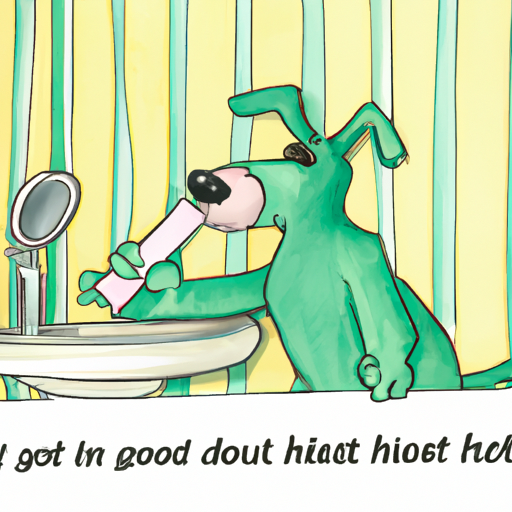Understanding Your Dog’s Breath
As a caregiver, you understand that having a pet is akin to having a child, and just as you’d be concerned about your child’s dental health, your dog’s breath should also be a point of concern. Bad breath in dogs can be more than just unpleasant. It often indicates an underlying health issue that needs to be addressed. Understanding the root cause of your dog’s bad breath is the first step towards solving the problem.
Adopt Regular Dental Hygiene Practices for Your Dog
-
Brush your dog’s teeth regularly: Just like humans, dogs also need their teeth brushed regularly. This might be a daunting task at first, but with time, patience, and consistency, your dog will get used to the routine.
-
Get a dog-friendly toothbrush and toothpaste.
- Start by brushing a few teeth at a time.
-
Gradually increase the number until you’re able to brush all of their teeth.
-
Use dental chews and toys: Dental chews and toys are not only enjoyable for your furry friend, but they also help keep their teeth clean.
-
Choose a size-appropriate chew or toy for your dog.
-
Monitor your dog while they’re using it to prevent choking.
-
Regular vet visits: Annual dental cleanings at the vet are necessary to maintain your dog’s oral health. Your vet can also spot any potential issues early on.
| Dental Hygiene Practices | Benefits |
|---|---|
| Brushing Teeth | Removes food particles and prevents plaque build-up |
| Dental Chews and Toys | Stimulates saliva production and cleans teeth |
| Regular Vet Visits | Can spot potential dental issues early |
Dietary Changes
Sometimes, the solution to your dog’s bad breath could be as simple as changing their diet. Just like in humans, a diet filled with unhealthy, processed foods can lead to bad breath in dogs. Consider switching to a diet rich in whole foods, and avoid feeding your dog table scraps.
- Opt for dog food brands with high-quality ingredients.
- Include fresh fruits and vegetables that are safe for dogs.
- Encourage your dog to drink water frequently to prevent dry mouth, which can cause bad breath.
Over-the-Counter Solutions
There are numerous over-the-counter solutions that can help combat your dog’s bad breath. These include breath-freshening treats, water additives, and special dental diets. However, it is always best to consult your vet before introducing any new product into your dog’s routine.
When to Seek Professional Help
While bad breath in dogs is often a result of poor dental hygiene or diet, it can sometimes be a symptom of more serious health issues such as diabetes, kidney disease, or liver disease. If your dog’s bad breath persists despite your best efforts, it’s time to seek professional help.
FAQs
Q: How often should I brush my dog’s teeth?
A: Ideally, you should brush your dog’s teeth daily. However, if that’s not feasible, aim for at least three times a week.
Q: Can I use human toothpaste to brush my dog’s teeth?
A: No. Human toothpaste often contains ingredients that can be harmful to dogs. Always use a toothpaste specifically designed for dogs.
Q: What fruits and vegetables are safe for dogs?
A: Apples, bananas, blueberries, cucumbers, and carrots are among the fruits and vegetables that are safe for dogs. Always remove seeds or pits and cut them into small, manageable pieces.
Q: When should I consult a vet about my dog’s bad breath?
A: If your dog’s bad breath persists despite regular dental hygiene and diet changes, or if it’s accompanied by other symptoms such as loss of appetite or vomiting, it’s time to consult a vet.



